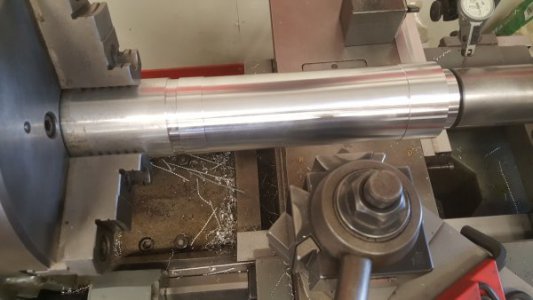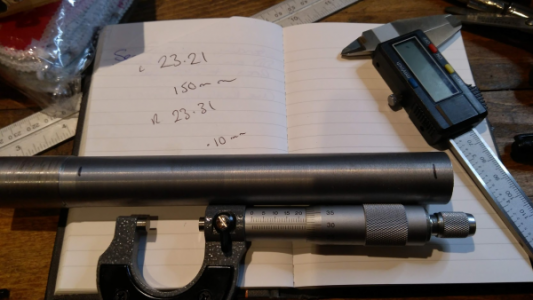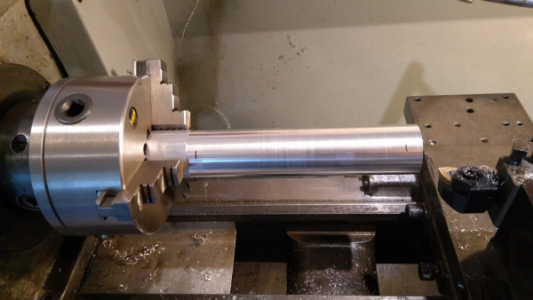- Joined
- Feb 1, 2018
- Messages
- 1,868
Excuse me but your test is giving you false readings. Aluminum is the best material for this because if you use steel and a carbide tool bit if you drag the tool backwards it may chip and a HSS bit will dull in steel. . If you use steel, use leaded cold roll. That bar is 2 times longer then it needs to be. The push away on that will be so severe. Cut it in 2 (shorter) and do it again. Also cut a lower land near the chuck, so when you take a cut and you are near the chuck the tool end in a low area. Take a .005" cut on the 2 lands and when you are off the right hand land, shut off the feed and crank it to the next land and cut it making sure not to touch the cross feed. Once you enter the lower under cut land nearest the chuck, you shut off the feed, shut off the spindle, DO NOT touch the cross feed crank. stop and then crank the saddle back and you will see the tool scratch the 2 lands and after it is off the right side, turn on the spindle and again DON'T touch the cross feed dial and turn on the feed and cut it again and take a clean up pass. This will eliminate any push away do to dull tool. I sometimes do it a 3 rd time. I have been using this technique for decades and it works. Please follow the directions I am giving and not try to reinvent the wheel. I am going to try to attach some info and test sheets. Note the machine the bar is a 16 x 36 Heavy Duty lathe. Go to page 5 of this manual. It is for a bigger machine but the principal is the same. http://www.vintagemachinery.org/pubs/2261/16506.pdf
Attachments
Last edited:




